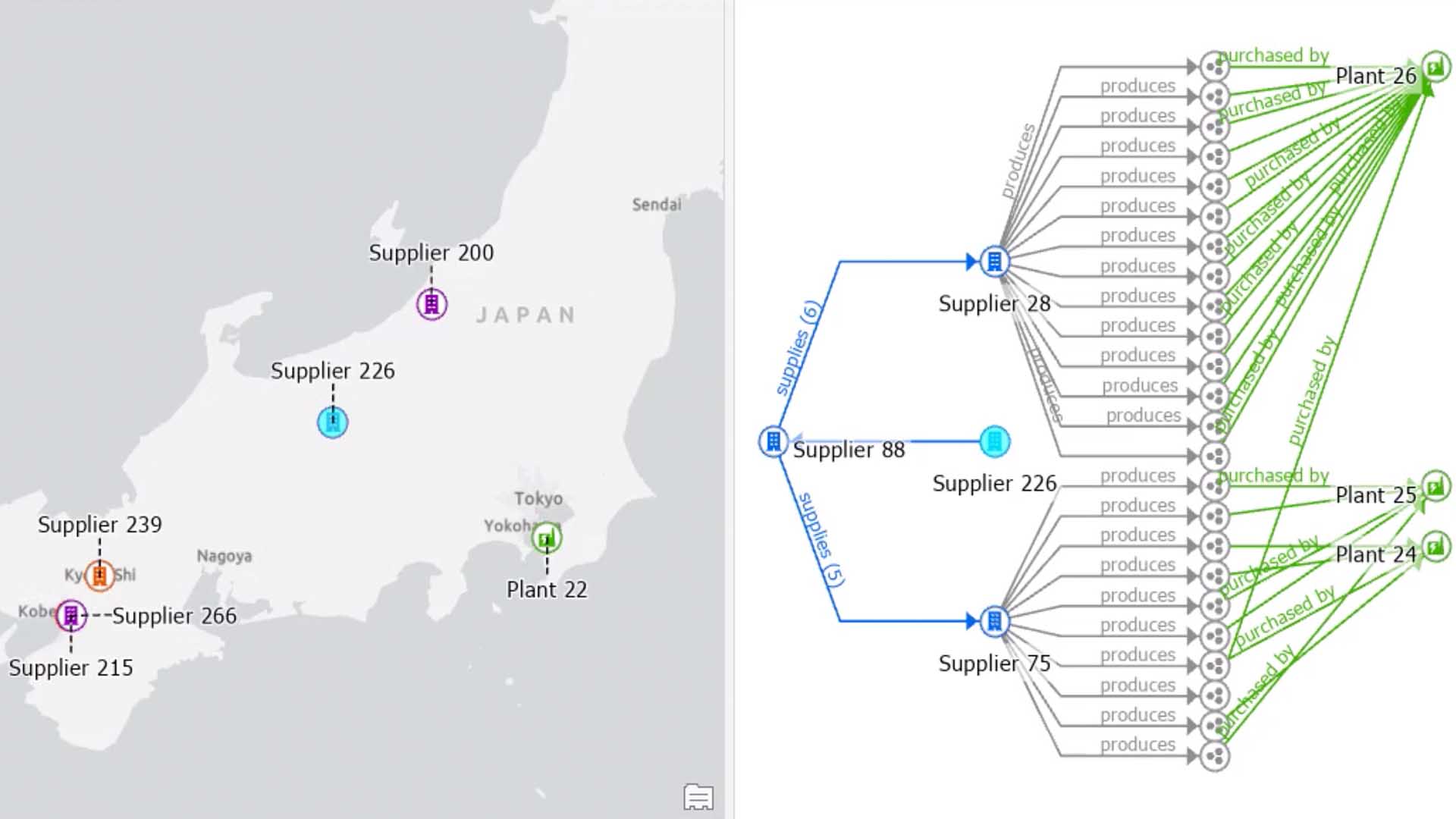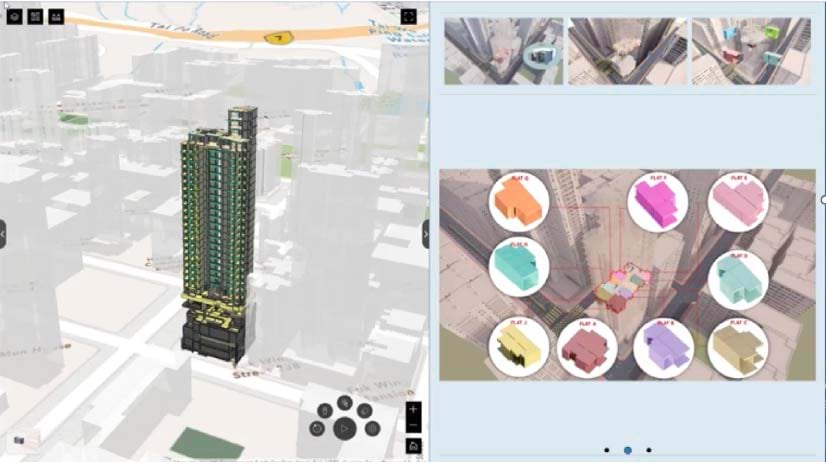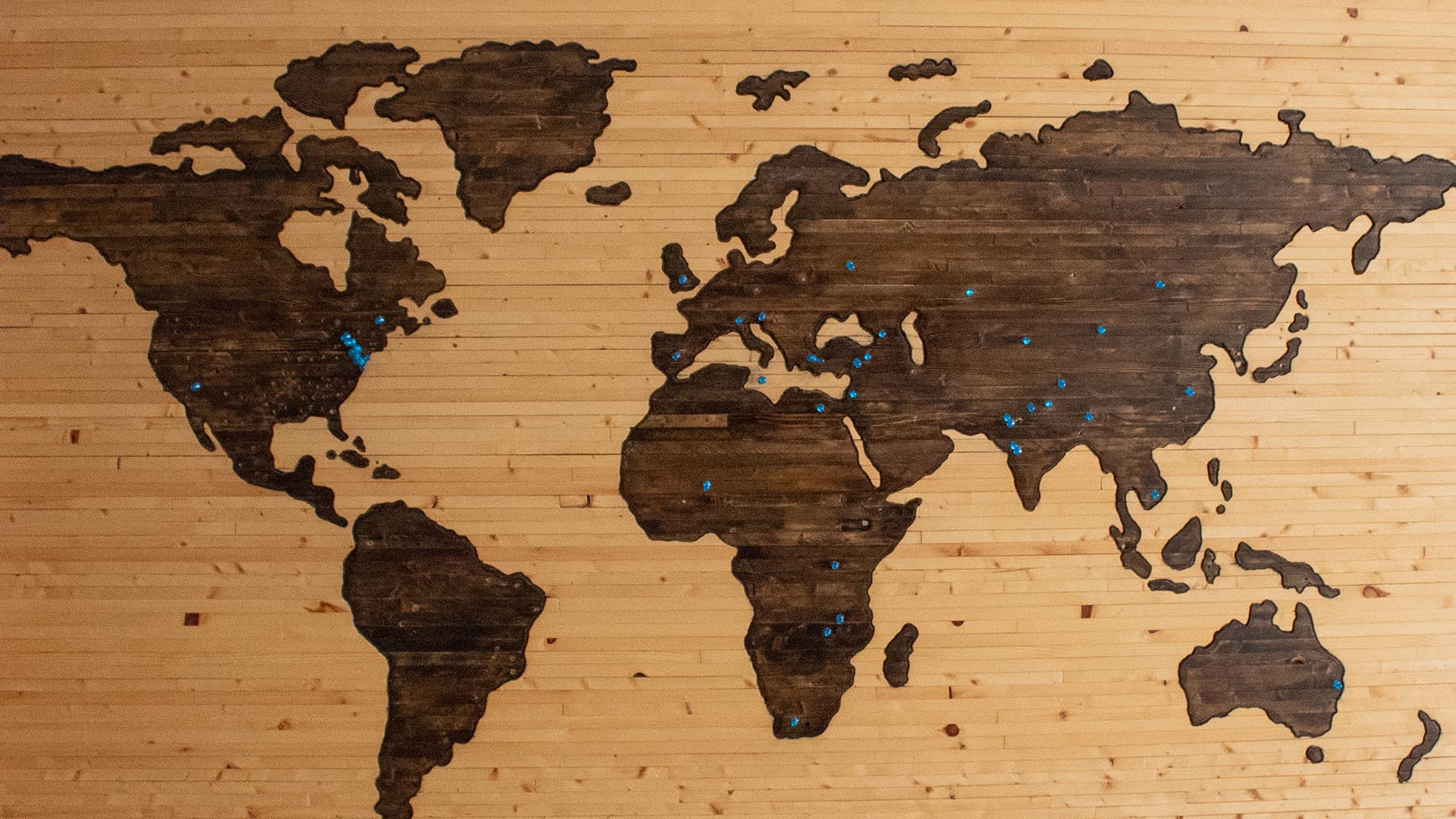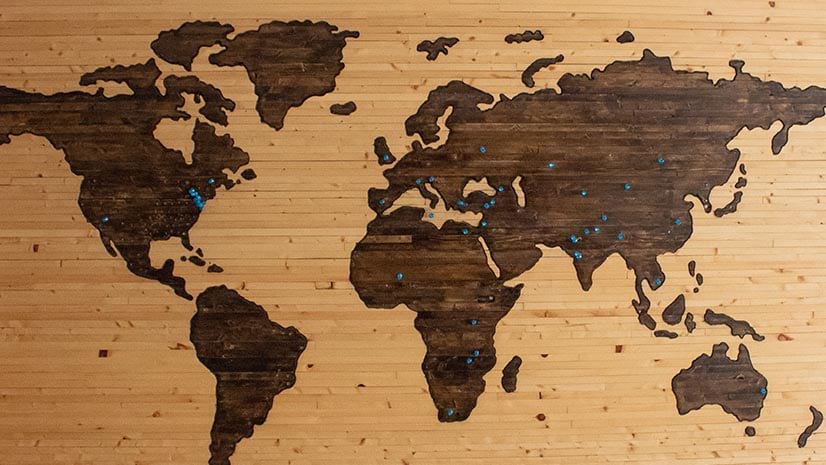Behind the products and devices that populate everyday life lie global trade systems of extraordinary complexity—and increasing fragility.
A modern car is composed of approximately 30,000 parts, generated by thousands of suppliers around the world. A single vehicle may use as many as 3,000 semiconductors for everything from blind-spot monitoring to seat position adjustment.
Another stalwart of today’s global consumer market—the iPhone—is assembled from suppliers in 43 countries across six continents.
For in-demand products, a disruption at even one supplier can rattle global markets. Recently, pandemic precautions, a winter storm in Texas, and a drought in Taiwan stymied semiconductor production, forcing CEOs higher in the supply chain to shut down factories, furlough workers, and delay shipments to retailers.
Now, a new capability in geographic information system (GIS) technology is creating supply chain transparency that helps executives trace delays, shortages, geopolitical incidents, and other risks through multiple tiers of suppliers to anticipate—and possibly avoid—knock-on effects.
Such transparency stems from sophisticated location analysis, which reveals the relationships within global supply chains. By laying bare how a bottleneck at a single facility could impact an entire web of production, these spatial business insights—also known as location intelligence—speed response times and decision-making in the C-suite.
A Hunt for Supply Chain Transparency
The video below demonstrates how a manufacturing executive—with the help of a GIS analyst—might grasp the full scale of a supply chain disruption and adjust accordingly.
The starting point is a traceability map displaying the geographic locations of the company’s own plants and the tier 1, tier 2, and tier 3 suppliers that deliver parts to those plants.
With up-to-date supply chain transparency, a manufacturing executive learns that one of the company’s assembly plants hasn’t received an order of semiconductors. By identifying Texas-based supplier 88 as the source of the delayed order, the executive can then visually trace how that facility will impact succeeding tiers of suppliers and plants.
This streamlined picture helps upper management alert affected parties in the supply chain and activate a scenario-planning process to find alternate means of sourcing chips.
The Lens of Geography
To further assess risks posed by the semiconductor bottleneck, a manufacturing executive can analyze the geographic context of the delay.
Supplier 88 relies on materials manufactured by supplier 226. By interrogating the GIS dashboard, decision-makers learn that supplier 226 is in Japan and affected by a region-wide silicon shortage. Business leaders would want to know which nearby suppliers and plants might be impacted, and supply chain transparency makes that possible.
With a geographic view of the dependencies between suppliers and plants, the executive could identify how this regional resource scarcity will play out across the global trade network.
A 360-Degree Perspective on Supply Chains
This new GIS capability reflects the reality that supply chains are shaped by the vicissitudes of complex relationships and geography. Location intelligence helps business leaders see how on-the-ground conditions—from flooding to pandemic shutdowns to political instability—could hamper the flow of goods. Equally important is gaining supply chain traceability on the end-to-end connections that—in the case of semiconductor production—stretch from rare earth mines to trucks that transport smartphones to store shelves.
GIS can capture both sides of that coin, thanks to its ability to integrate and analyze many varieties of data and display relationships through simple visuals. The resultant picture gives executives a significant advantage in responding to disruptions and mitigating supply chain risk.











